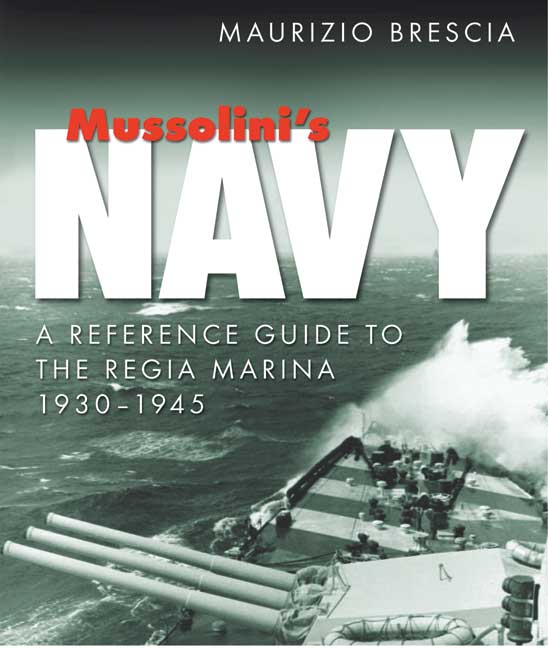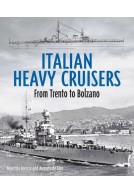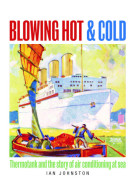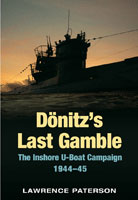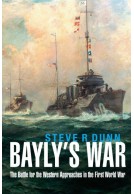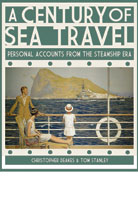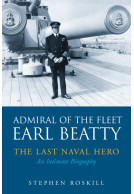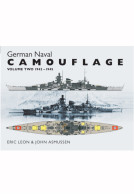Mussolini's Navy (ePub)

File Size: 51.7 MB (.epub)
Illustrations: 250 b/w, colour & line illustrations
ISBN: 9781473816503
Published: 11th October 2012
| Other formats available | Price |
|---|---|
| Mussolini's Navy Paperback Add to Basket | £20.00 |
This book is a complete guide to the Regia Marina, the navy with which Italy fought the Second World War. Starting with the historical background, it describes how the navy developed, how it was organised, the facilities that supported it, and the operations it conducted both before and after the armistice in 1943. It also details all its ships, with full technical particulars, plans and photos. Furthermore, there are chapters on special topics like camouflage; uniforms, decorations and insignia; and a 'who's who' of important naval personalities; and the reference value of the book is enhanced by a comprehensive bibliography and guide to sources. The illustration is a noteworthy feature of the book as the author's collection of naval photographs is one of the best in Italy. He is also a fine draughtsman, and his ship plans and colour illustrations are both detailed and accurate, adding a particular appeal for modelmakers. Of all the main combatant navies of this era, the Italian is probably the most poorly represented in English publications, so this comprehensive handbook will be especially welcomed by the naval history community.
As seen in...
Ship Pad
Another naval book from the admirable publisher Seaforth, it has the same page format as their previous naval books on the Littorios and French battleships.
Dreadnought - Newsletter of the Battleship Special Interest Group
Think of it as an expanded version of Aldo Fraccaroli's 'Italian Warships of WWII' with better photos and you won't be disappointed.
A good companion to the Littorio book.
The book incorporates 400 illustrations, well reproduced, and often in a large format. Some are in colour and have rarely been seen before. A book which otherwise effectively fills a long-established gap in our naval literature.
K C Fraser
The book incorporates 400 illustrations, well reproduced, and often in a large format. Some are in colour and have rarely been seen before.
Bob Duckett
A book which otherwise effectively fills a long-established gap in our naval literature.
For one of the larger and most distinctive of the world navies, it is has been unfortunate that there has not been a commensurate number of books dealing with the Italian Navy. In comparative terms the Royal Australian Navy has been better served not only in it's published histories but also in the manner that it's archival material and other primary sources have been preserved and made accessible for historians.
The Navy Vol 75
The reasons for the Italian situation lie not just in the arguably uneven performance of the Regia Marina in World War II. There have been a comparatively small number of naval historians researching this rich seam. Fortunately for the Italian Navy and all those interested in Naval history this situation has steadily turned around since the 1990's. Works such as the Italian Navy in World War II by James Sadkovich have been important in this regard.
Maurizio Brescia's latest book is a major achievement and a milestone in the renaissance of Italian Naval history. Dr Bescia is a highly regarded author on the Italian Navy. This book is the latest high quality book from Seaforth publishing dealing with the Italian Navy. Another of their books is Erminio Bagnasco and Augusto de Toro's comprehensive review of the Littorio Class battleships that was reviewed late last year by The Navy.
In 240 pages Brescia's deals remarkably well with the history, infrastructure, ships, aircraft, personnel and uniforms of the Regia Marina. The strengths of Brescia's book are its authoritative treatment of the subject matter, his own excellent line drawings and the clarity of the photographs. For Australian readers most of the photographs will be new to them. The Italians have built some of the most graceful warships ever to sail the seas and this book does full justice to them. Some of the most interesting photographs are those of warships that survived the war and were extensively modified to bridge the missile age. The shot of terrier missile armed cruiser GARIBALDI is fascinating.
While the book gives a good overview of the operations, it does not set out to be the authoritative operational account of the Regia Marina. Not all minor actions are included. A case in point is the night Battle of the Strait of Otranto in November 1940 in which the elderly torpedo boat FABRIZI fired a torpedo at HMAS SYDNEY (but missed) as it valiantly but vainly attempted to defend a convoy from a powerful cruiser and destroyer force. Equally not all the engagements of the motor torpedo boat are included. In part this is due to significant work still required to research the Italian Naval archives in Rome. In short that definitive account remains to be written. This does not detract from Mussolini's Navy which stands on its own merits.
Brescia's latest book is a gem and is thoroughly recommended.
This is certainly one book that I wished I'd had a few years back when I wrote my four part series on the same subject for Sea Classics! It would've been a tremendous help, to be sure. This is a thorough, detailed, comprehensive, well researched, ably written, and superbly illustrated, one volume treatment of it's subject that every reader will want to own and read.
Sea Classics Magazine
The pictures are in both colour and black and white, including many line drawing charts and graphs, most of which I've never seen anywhere else before, detailing every aspect of this too-little covered national navy. This book finally does justice to one of the lesser known navies of World War II, and thus is not to be missed!
…this new book by Maurizio Brescia is sure to become the standard reference source for information on the Italian Navy of World War Two in the English language. Anyone seeking information on the ships, men and bases of the Regia Marina 1939 – 1945 must have this book at hand.
Warship International
Better still this time is all about the Regia Marina and it is a thing of such beauty it reminds me of a silver blue Lancia Gamma Coupe I knew and loved.
War History Online
The author explains how the Italians had eschewed naval aviation and hadn’t considered aircraft carriers being of use in the confines of the Mediterranean, a fatal strategic error. The war came too early for the Italian Navy and the tragedy is it was a made up of lovely ships crewed by fine men and it wasn’t a fascist organisation at all, it was monarchist. But stuff happens and it certainly rained down on the Regia Marine in spades.
Maurizio Brescia has written an impeccable and impressive book about seemingly every aspect of the Regia Marina, the Italian Navy of World War II, for English- speaking naval enthusiasts and modellers. This large format book covers such topics as the organisation of the fleet, its leaders and important personalities, naval aviation, warship camouflage, and bases, ports and shipyards. There are many, many very good photographs, which are drawn from an amazing variety of sources which are mostly new to me, as well as many detailed line drawing some of them by the author.
Art Nicholson, U. S Naval institute
Mussolini’s Navy is a most welcome new resource for those who are interested in the Regia Marina but who do not read Italian well (or at all).
This book is an excellent reference to all aspects of the Italian Navy in WWII, including its early history from 1861 and through WW1, its air arm, coastal defence artillery, submarines and ‘human torpedoes’ s well as the battleships and cruisers that were so threatening to the British Mediterranean fleet. The book features excellent photographs and a series of coloured drawings to illustrate flags and camouflage. The ideal gift for a naval historian.
Navy Today (New Zealand)
This is an enjoyable book and a good start to any study of the Italian Navy.
Warships, January 2013
Brescia gives us an overview of the wartime Italian Navy, including its bases and organisation, ships and aircraft. There are also chapters, in a colour section, on camouflage, flags and uniforms, as well as a Who’s Who of some 40 – odd admirals and other officers. Mussolini’s Navy is illustrated with some rarely seen photographs from American and private Italian sources. This is an enjoyable book and a good start to any study of Italian Navy.
Warships International Fleet Review
The author explains how the Italians had eschewed naval aviation and hadn’t considered aircraft carriers being of use in the confines of the Mediterranean, a fatal strategic error. The war came too early for the Italian Navy and the tragedy is it was a made up of lovely ships crewed by fine men and it wasn’t a fascist organisation at all, it was monarchist. But stuff happens and it certainly rained down on the Regia Marina in spades.
War History Online
The author and his friend Erminio Bagnasco make a point of telling us this is the first major work of its kind in English. I am certainly no expert, but I can tell you that this sumptuous work is a joy from first to last. We may joke about those Italian cars of the seventies and eighties running beautifully, looking gorgeous but having dodgy electrics – but in this book it all looks fantastic, reads well and you turn the pages at your own pace. Perfection!
I cannot get over the quality of the photo archive and the way it has been used here. The colour camouflage schemes section with artwork by Paola Zaio is excellent. There is stuff on uniforms and flags and we get a who’s who on naval figures in addition to all the obvious meat and drink on the ships and classes and naval establishments etc, etc. This book is an absolute joy. It would be great to see comparable books like this on similar navies. If I was pressed to make a top ten of my books of the year, this would be in it, without a doubt.
http://www.warhistoryonline.com/reviews/review-mussolinis-navy-by-mark-barnes.html
Mussolini’s navy tends to get overlooked in the English language literature about this period – especially when compared to its Axis colleague the German Kriegsmarine. However, this superb work has address this issue and it will rank amongst the essential books on the Regia Marine.
Dr Stuart Blank, Military Archive Research
There are details of all the capital ships with data on their full technical specifications and there are lavish photos and plans of these vessels. There is coverage of other issues such as camouflage schemes, medals, insignia and uniforms and a list of all the important personalities is also given.
This tome has involved an extensive research effort and collation of technical and other data. The author has produced a first rate volume and I am confident that this will become a sought after and highly prized reference book. It covers all the essential aspects of the Regia Marine and he has done a proud task of recording the history of his nation’s navy.
A simply magnificent book describing the Italian Navy of the Second World War, profiling all classes of vessels, from battleships and aircraft carriers to motor torpedo boats and submarines, each complete with technical summaries, descriptions, service histories, plans, and a plethora of superb photographs. In addition, a number of chapters are dedicated to detailing the organisation of the Regia Marina, its bases around the Mediterranean and colour plates illustrating various forms of camouflage, as well as notes on naval uniforms, insignia and flags, and also a "Who's Who" of the Italian Navy, profiling some of its central personalities. This is an essential volume for anyone who has a keen interest in maritime aspects of the Second World War, and not least because the impressive vessels of the Regia Marina have been sadly neglected from major discussion in many an English language naval history book.
Pegasus Archive
A much needed boost for the often maligned Italian Navy. Also comprehensive, well laid-out, and lavishly, if not beautifully illustrated
Naval History.net
Like many naval wargamers I have always had a fascination with the Italian navy of WW2. My interest was spawned by my brother’s 1/1200 scale plastic kit of the Vittorio Veneto (a model I still have today, over 30 years on). So I was interested to hear that Seaforth were releasing a reference guide to the Italian Navy of WW2. As far as I am aware there is no other book , certainly available in English, of its type available anywhere. I have to tell you that this is a most excellent book and possibly the only technical reference that those with less than a very deep interest will ever need. In 240 pages Sig. Brescia covers every ship in the Regia Marina from battleship down to rescue tugs, submarines to “Maialeâ€, including prize ships and others. The book begins with a brief history of the RM from 1861 to the outbreak of WW2, then goes on to describe in detail the various naval bases and key facilities, fleet organisation and operations around the Mediterranean but also the Black Sea, Red Sea and Atlantic, detailed technical descriptions of all naval craft, naval aviation, both ship and shore based, warship camouflage schemes, flags, uniforms and a “who’s who†of key Italian naval personnel of the period.
David Manley
The book si profusely illustrated with digrams and excellently reproduced photographs. A real boon is the inclusion of a colour section, 16 extra pages showing camouflage schemes, some lovely period colour photographs, flags and insignia details.
This is not an operational history of the Italian Navy, but is an essential supporting reference that details how and why the RM was organised, assembled and equipped as it was. I have found it to be an invaluable work in some of my current projects and would not hesitate in recommending it to all with an interest in the naval war in the Mediterranean in WW2. Mr Brescia is to be congratulated for a truly wonderful piece of work!
David Manley
Naval Wargames Society
Of all the major naval powers of World War 2, it can be strongly argued that the Italian Navy (Regia Mariana) has had the least exposure in the English language. Maybe this lack of exposure is a remnant and testimony to the effectiveness of the Allied propaganda of the period, and the more recent invention of the internet, where all things Italian were seen as having 1 forward gear and 5 reverse gears, and where these myths & propaganda found a new home & audience. For those not fortunate to have access the Italian USMM, Revista Marratima or Storia Militare, then the works of Bragadin, O’Hara, Sadkovich, Greene & Massignani have been welcomed in helping rectify this imbalance over the years.
Andrew Hill
This latest work by the renowned Italian author Dr Maurizio Brescia is a work of authority and clarity. As a reference guide you will not find exhaustive descriptions concerning specific actions or battles, but something akin to the works of M.J.Whitley , though much more detailed. The sheer range of the book is a masterful balance and for which the author deserves due credit.
The book is broken down into some 10 chapters, though by far the largest is the 131pages of the fourth chapter, called Ships in Service 1940-5. Though in fact where necessary he goes on and charts the life of these vessels post 1945. The book is lavishly filled with photographs from the usual suspects to those concerning gun emplacement being constructed above Genoa, smoke generators on train wagons, to that of the armoured train firing during a drill. I personally found Chapter 2 on Dockyards, Naval Bases, Ports, Shipyards and Coastal Defences most enthralling. Its scant 11pages left you with a myriad of questions about a range of issues that none of the other English language tomes even come close to discussing or answering. Other chapters detail areas such as pre 1939 history, Fleet Organisation/Operations, Assault Craft, Naval Aviation, Naval Camouflage, Flags, Uniforms and a Who’s Who of the Italian Navy.
If anyone has a real interest in the Italian Navy of WW2 or wanting an understanding of the events, of which the Italian Navy were a part, then this book deserves, nay demands shelf space. My hope is that inspired by the success of this book, it will bring about, more quality books about the Italian Navy of WW2 in English.
About Maurizio Brescia
MAURIZIO BRESCIA serves on the Editorial Board of the monthly Storia Militare. He has published a number of books on Italian warships and provided illustrations for many more. For Seaforth he wrote Mussolini’s Navy published in 2012.







